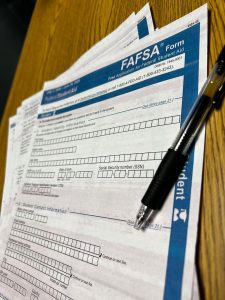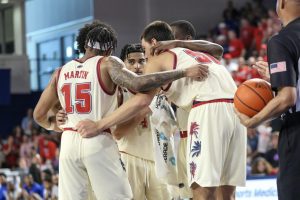Summer is the time when football teams train to get into the best shape for the season ahead. They lift weights, practice and adhere to a strict diet every day — but this summer, this is not the case.
FAU athletics is facing a $12.6 million budget cut. Football players are not enrolled in summer classes and are instead working full-time to pay for off-campus housing and training on their own.
FAU had money for 12 out of 122 active players to take summer A classes.”In the fall, the players’ room and board and meals are paid for,” says football coach Howard Schnellenberger.
“During the summer terms we give them one session of school, but most stay home.”
With players working and not being on campus, the training staff cannot monitor them to make sure they eat correctly — and some players are losing weight instead of gaining it.
“With the economy how it is now, some players don’t even find jobs,” says wide receiver Chris Bonner, a senior criminal justice major. “But they want to be here so bad they sleep on some other teammates’ couches and they barely eat.”
The problem comes down to the amount of calories an active player eats every day. In order to keep gaining weight and see results in his workouts, an athlete must consume a high-calorie diet, which players are not.
FAU cannot compete with larger universities, like the University of Florida (UF), which can afford to have all their players living on campus all summer, training together, taking classes and eating the right foods to keep growing.
“FAU is pretty broke,” says Bonner. “Players at other schools get their classes paid for, as well as a check for their living, but for us our first obligation is working, so sometimes players have to leave practice early, and the coaches understand that.”
The Owls are not the only team in the Sun Belt Conference with this problem. In fact, our rival, Florida International University (FIU), faces the same dilemma.
“Summer is always a concern because there is no meal plan in place,” says FIU strength and conditioning coach Roderick Moore. “It is definitely a disadvantage, and all we can do is tell our players to read the food label and rely on their self control and responsibility.”
Like FAU, FIU has about three trainers on staff to oversee the football team, while UF has eight.
“Players come here to be a part of growth,” says Schnellenberger. “We have a very special kind of player who comes here, one who is a giver, and they know the financial situation this school faces.”
“Financial situation” seems to be FAU’s new motto, and athletes are not escaping this plague.
“We don’t sign any big, fat guys,” says Schnellenberger.
But if this summer trend continues, coaches might have to.
How many calories does your body need?
There are three primary factors that determine your body’s energy output: basal metabolic rate, energy expended during physical activity and the amount of food you consume.
Basal metabolic rate (BMR) is the energy your body uses during heartbeats, breathing and maintaining your body temperature, which will tell you how many calories per day you need for your body to function at its peak.
Adult males: Multiply your body weight by 10, then add twice your original body weight to that value. (e.g., for a 150-lb. male: 150×10 = 1,500 + [150 x 2] = 1,800 calories per day.)
Adult females: Multiply your body weight by 10, then add your original body weight to that value. (e.g., for a 120-lb. female: 120×10 = 1,200 + 120 = 1,320 calories per day.)











